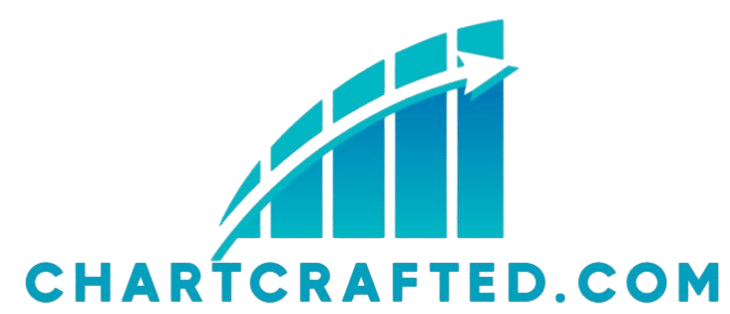Top 10 Risk Management Tools for Investors
In today s unpredictable financial landscape, mastering effective risk management is essential for you as an investor looking to protect your assets and maximize returns.
This article explores the top 10 risk management tools that can empower you to make informed decisions. From sophisticated financial planning tools to real-time market data platforms, a multitude of resources exists to elevate your investment strategies.
You ll uncover the key features, types, and costs associated with these tools, along with insights on how to seamlessly integrate them into your investment approach for optimal results.
Contents
- Key Takeaways:
- 1. Financial Planning Tools
- 2. Portfolio Management Software
- 3. Risk Assessment Tools
- 4. Market Analysis Tools
- 5. Investment Tracking Software
- 6. Risk Management Calculators
- 7. Real-Time Market Data Platforms
- 8. Investment Risk Management Services
- 9. Risk Management Training Programs
- 10. Risk Management Consulting Services
- How Can Risk Management Tools Help Investors?
- What Are the Key Features to Look for in Risk Management Tools?
- What Are the Different Types of Risk Management Tools Available?
- How Can Investors Determine the Effectiveness of Risk Management Tools?
- What Are the Costs Associated with Using Risk Management Tools?
- How Can Investors Incorporate Risk Management Tools into Their Investment Strategy?
- Frequently Asked Questions
Key Takeaways:

- Financial planning tools help you budget and assess your goals.
- Risk management tools minimize potential investment risks.
- Look for features like real-time data and easy interfaces when choosing tools.
1. Financial Planning Tools
Financial planning tools are crucial for managing your finances effectively. They include tools that improve managing risks through comprehensive risk analysis and monitoring solutions.
Among these tools, risk reporting dashboards shine as invaluable resources. They provide real-time visualizations that highlight potential vulnerabilities, facilitating effective communication among your stakeholders.
Compliance reporting tools simplify adhering to regulations, helping you maintain transparency and avoid costly pitfalls.
Integrating risk management software is pivotal for your business. It enables you to proactively assess risks, embedding those considerations into your financial strategies.
This approach fosters a culture of accountability, preparing you to face unexpected challenges with confidence.
2. Portfolio Management Software
Portfolio management software elevates your investment strategies by equipping you with risk analysis tools and visualization features. These elements enable you to understand your risk exposure while effectively tracking performance.
With these functionalities at your fingertips, you can pinpoint potential pitfalls and seize opportunities within your portfolio, embracing a proactive approach to investment management. Platforms like Morningstar and Personal Capital deliver robust analytics that spotlight volatility and asset allocation.
Tools like Riskalyze shine because they can quantify your risk tolerance and generate tailored investment recommendations. By leveraging such software, you can make informed decisions that align seamlessly with your financial goals and the ever-evolving market landscape.
3. Risk Assessment Tools
Risk assessment tools are essential for pinpointing potential threats and vulnerabilities within your organization. By using advanced risk scoring algorithms and effective risk identification techniques, you can prioritize and mitigate risks with precision.
These tools offer various options, including qualitative and quantitative assessments, allowing you to select the method that aligns best with your unique context. With sophisticated risk scoring algorithms, you gain a clear framework to evaluate the severity and likelihood of potential risks.
The importance of ongoing risk evaluation cannot be overstated. This proactive approach keeps your risk management dynamic and relevant, ultimately cultivating a more resilient operational environment.
4. Market Analysis Tools

Market analysis tools provide valuable insights that can transform your investment strategy. They help you navigate the unpredictable market and make informed decisions.
These amazing tools offer features like real-time data analytics and trend forecasting essentials for making informed choices. By integrating with incident management systems, you can proactively identify potential risks and respond swiftly to any adverse events.
This synergy elevates your overall risk mitigation strategies and refines your strategic planning process. The ability to visualize data allows you and your stakeholders to quickly grasp complex information, ensuring that your decisions are grounded in thorough analyses rather than just gut feelings.
This fosters a culture of making decisions based on data, giving you a competitive edge in today s fast-paced market.
5. Investment Tracking Software
Investment tracking software is crucial for you as an investor to monitor your portfolio closely. By utilizing risk tracking systems, this software provides real-time insights that ensure your investment strategies align perfectly with your risk management frameworks.
These sophisticated platforms allow you to visualize your financial data comprehensively, enabling you to make informed decisions quickly. When integrated seamlessly with cloud-based risk management tools, you gain a holistic view of market trends and potential risks.
This setup enhances your ability to react proactively to market fluctuations, ensuring that your investment choices are always in sync with your overall risk tolerance.
The analytics offered by these tools enable you to assess your performance against benchmarks and adjust your strategies accordingly. This creates a dynamic investment environment that promotes agility and knowledge-based decision-making, allowing you to stay ahead of the curve.
6. Risk Management Calculators
Risk management calculators are essential tools that enable you to conduct thorough risk impact assessments and devise effective risk reduction strategies. This ultimately enhances your organization’s overall risk management capabilities.
These calculators simplify complex quantitative analyses, making it easy for your teams to evaluate potential risks and their corresponding impacts. For instance, the Monte Carlo simulation is a popular tool in finance that helps you understand the potential variability in investment outcomes. This allows you to make informed decisions grounded in probability distributions.
Likewise, the Bow-Tie method is frequently employed in industries like oil and gas to visualize pathways to potential risks and identify effective mitigation measures. By utilizing these calculators, you can prioritize risks and allocate resources more efficiently, ensuring that your organization is well-equipped to navigate uncertainties across various operational landscapes.
7. Real-Time Market Data Platforms
Real-time market data platforms provide you with critical information that enhances your monitoring of risk indicators. This enables you to adapt your risk management processes based on the current market landscape.
By leveraging these platforms, you can tap into the latest insights and trends that are essential for maintaining a competitive edge in an ever-evolving financial environment. Integrating real-time data with advanced risk reporting dashboards ensures that you and all stakeholders have access to a comprehensive overview of market dynamics and potential threats.
This synergy streamlines your ability to identify emerging risks and facilitates more informed decision-making, allowing you to allocate resources effectively and respond promptly to unforeseen challenges.
As a result, you can depend on these tools to strengthen your strategic planning efforts and uphold a robust risk management framework.
8. Investment Risk Management Services

Investment risk management services are crucial for organizations like yours that aim to navigate the complexities of financial uncertainties. These services provide vendor risk management solutions and compliance reporting tools that align seamlessly with best practices in risk management.
They encompass a variety of strategies tailored to identify, assess, and mitigate the diverse risks that may affect your organization’s financial health. These strategies help identify, assess, and mitigate diverse risks. By using advanced analytics, you ensure compliance with regulations and optimize efficiency.
The bespoke nature of these services allows them to cater to your organization s unique risk profile and specific needs, enabling you to implement proactive measures against potential threats.
This approach builds resilience in unpredictable markets and enhances knowledge-based decision-making processes that fuel sustainable growth.
9. Risk Management Training Programs
Risk management training programs are essential for equipping you with effective risk management strategies, risk evaluation methodologies, and robust documentation processes. They combine theoretical insights with hands-on workshops.
This combination allows you to apply concepts in realistic scenarios. Engaging in simulations and case studies enables you to hone critical thinking skills vital for identifying, assessing, and mitigating risks in your workplace.
These training initiatives build a culture of proactive risk awareness, enhancing communication within your teams and fostering a sense of accountability. Over time, such comprehensive training improves compliance with regulations and elevates overall risk management practices, ultimately bolstering your organization’s resilience against unforeseen challenges.
10. Risk Management Consulting Services
Risk management consulting services help design and implement robust enterprise risk solutions. This optimizes your risk management workflows and establishes effective control measures.
These services offer a variety of options, including thorough risk assessments that pinpoint potential vulnerabilities, as well as customized strategy development to proactively tackle those issues. By collaborating closely with your organization, consultants provide the necessary implementation support to ensure that new practices blend seamlessly with your existing frameworks.
This cooperative approach strengthens your risk management system and drives significant efficiencies throughout your operations. These improvements empower you to make informed decisions, protect your assets, and cultivate a culture of risk awareness that resonates at every level of your organization.
How Can Risk Management Tools Help Investors?
Risk management tools are absolutely essential for you as an investor. They provide robust software and monitoring solutions that enhance your decision-making processes and help mitigate potential risks within your portfolio.
These sophisticated tools come with advanced analytics capabilities. They help assess historical data and anticipate market fluctuations, allowing you to understand how specific investments may react under varying conditions.
With intuitive reporting dashboards at your fingertips, you can gain real-time insights that enable you to visualize risk exposure across your holdings with ease. Such features encourage you to make proactive adjustments to your strategies, leading to more informed choices.
By streamlining risk monitoring processes, these tools enable you to maintain your focus on long-term objectives while effectively managing immediate threats. Ultimately, this fosters improved portfolio performance and boosts your confidence on your investment journey.
What Are the Key Features to Look for in Risk Management Tools?

When you re selecting risk management tools, it s essential to prioritize key features like strong risk analysis features, real-time reporting, and seamless integration with your existing software.
Beyond these foundational elements, a user-friendly interface is crucial. It ensures that you and your team can easily navigate and interpret the data. Customizable risk assessments allow you to tailor evaluations to fit your unique portfolios or changing market conditions, enhancing your ability to spot potential vulnerabilities.
Efficient data visualization capabilities are game-changers, transforming complex data sets into intuitive graphs and charts. This clarity makes it much easier for you to discern trends and make informed investment decisions. For example, a tool that highlights potential market downturns with vivid visual cues can prompt timely reactions, helping you preserve capital and optimize your returns.
What Are the Different Types of Risk Management Tools Available?
You have a wealth of risk management tools at your disposal, each meticulously designed to tackle specific aspects of risk. From risk assessment software to tracking systems and reporting dashboards, these resources are essential in your toolkit.
These tools do more than just identify potential threats; they offer structured frameworks for keeping track of and reducing risks over time. For instance, risk assessment software provides valuable evaluations of the likelihood of adverse events and their potential impacts. Meanwhile, tracking systems keep you updated in real time on your risk exposure. On top of that, risk reporting dashboards transform complex data into clear, intuitive visuals, allowing you to quickly grasp your current risk landscape.
By integrating these diverse tools, you can craft a comprehensive risk management strategy that not only proactively addresses challenges but also enhances your decision-making processes.
How Can Investors Determine the Effectiveness of Risk Management Tools?
To find out how well your tools work, evaluate their performance against established risk evaluation methodologies and utilize compliance reporting tools to ensure adherence to regulations.
This evaluation process involves analyzing various metrics such as Value at Risk (VaR) which measures the potential loss in value of an asset over a defined period for a given confidence interval stress testing results, and the frequency of compliance breaches, all serving as critical benchmarks. Key performance indicators (KPIs) related to risk exposure levels and the overall financial health of your organization can offer further insights.
It s essential for you and your team to engage in ongoing evaluations and seek feedback from all relevant parties.
This continuous cycle of assessment and refinement enables you to adapt your strategies, enhancing your overall risk management practices to tackle emerging challenges and ensure sustained compliance.
What Are the Costs Associated with Using Risk Management Tools?
Understanding the costs of risk management tools is vital for making smart investment choices. These costs can vary significantly based on features, scalability, and whether the solution is cloud-based or on-premises.
Beyond the initial investment for purchasing or subscribing to these tools, it s important to consider ongoing expenses such as maintenance fees and the costs of training your team to use the software effectively. While those upfront costs might give you pause, the long-term benefits like improved decision-making capabilities and the proactive identification and mitigation of risks can greatly outweigh those initial expenditures.
Ultimately, these tools can enable you to make informed choices, protect your assets, and navigate potential market fluctuations with greater confidence.
How Can Investors Incorporate Risk Management Tools into Their Investment Strategy?
Don t wait to protect your investments start incorporating these tools today! You can effectively weave risk management tools into your investment strategy by aligning them with processes that prioritize finding and managing risks.
To kick things off, regularly assess the risks using tools like risk assessments, stress testing, and scenario analysis. These tools help you identify potential vulnerabilities in your portfolio, allowing for proactive adjustments.
Integrating analytics software streamlines the continuous evaluation of market conditions and investment performance. Actively monitoring these metrics helps refine your approach, ensuring that risks are managed without compromising potential returns.
Using these strategies boosts your portfolio’s strength and helps you grab new growth opportunities, providing a distinct competitive edge in an ever-evolving market.
Frequently Asked Questions
What are the best risk management tools for investors?
1. Diversification: This involves spreading your investments across different asset classes to minimize the impact of a single market downturn.
2. Stop-loss orders: This tool allows investors to set a predetermined price at which their shares will be sold, limiting potential losses.
3. Hedging: Using strategies to protect your investments against losses.
4. Asset allocation: By dividing investments among different asset classes, investors can reduce risk and potentially increase returns.
5. Options: Investors can use options contracts to protect against potential share price declines.
6. Risk assessment tools: These tools help investors identify and assess potential risks associated with different investments.
7. Stop-limit orders: Similar to stop-loss orders, these allow investors to set a price at which their shares will be sold, with a specified minimum price.
8. Technical analysis: By analyzing market trends and patterns, investors can make more informed decisions about when to buy or sell stocks.
9. Fundamental analysis: This approach involves evaluating a company’s financial health and future prospects to determine its value and potential risks.
10. Robo-advisors: These automated investment platforms use algorithms to manage portfolios and implement risk management strategies.
Take action now and explore these tools to enhance your investment strategy!






